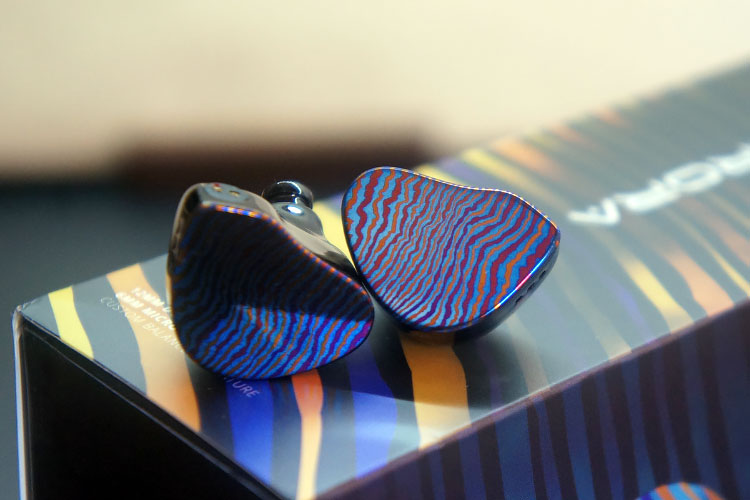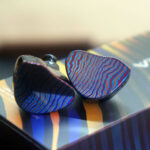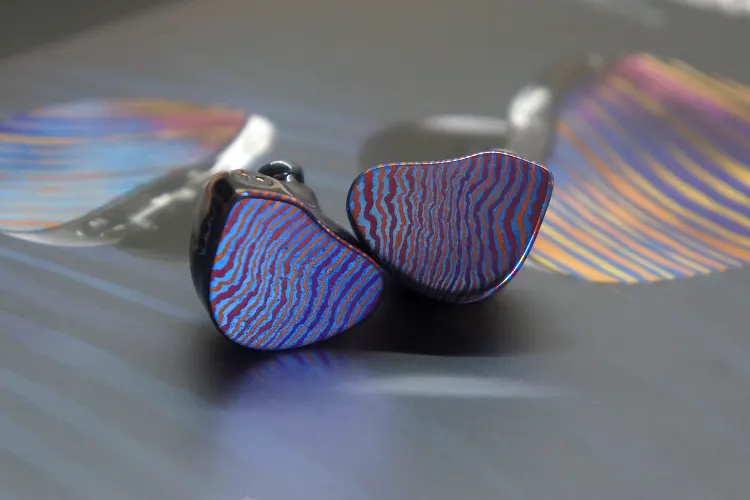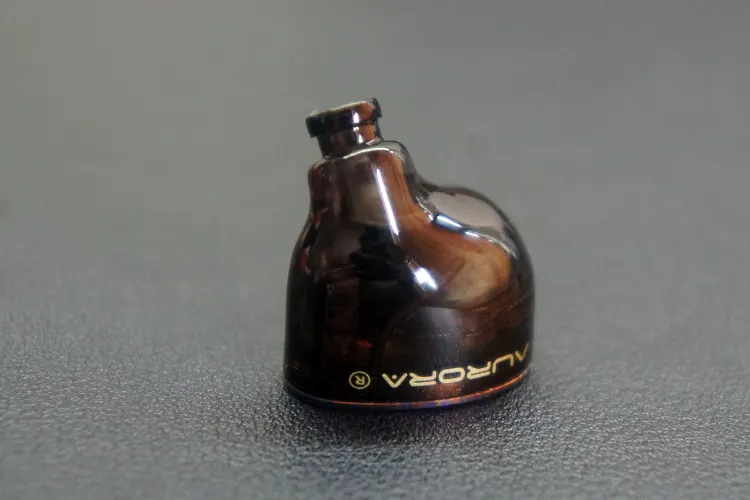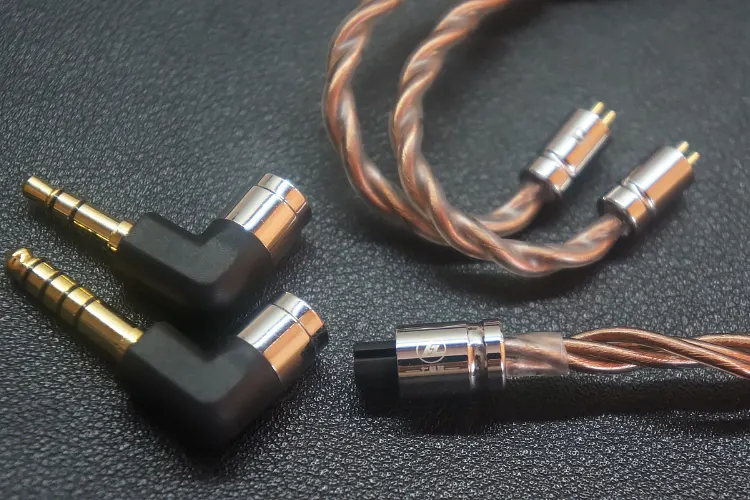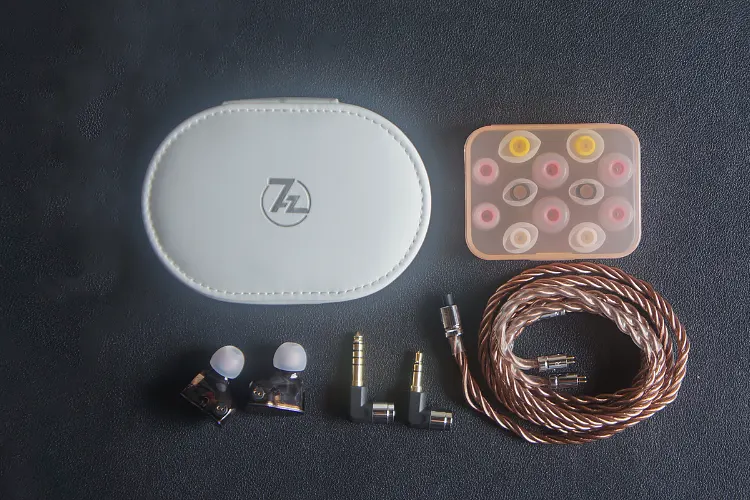In this feature, Meldrick reviews the 7Hz Aurora, which is the company’s latest flagship ‘tribrid’ 12mm dynamic, 6mm planar, and dual BA driver IEM. It is priced at $399.
Disclaimer: This was sent to me as a sample for my honest opinion. Headfonics is an independent website with no affiliate links or services. I thank the team at Linsoul for giving me this opportunity.
Click here to read more about 7Hz products we have previously reviewed on Headfonics.
Note, that this article follows our latest scoring guidelines which you can read in more detail here.
In today’s review, we take a look at 7Hz’s latest flagship tribrid IEM, the Aurora.
Integrating a unique 6mm micro-planar driver alongside a pair of Balanced Armature and dynamic drivers, it will be interesting to see if 7Hz can cohesively implement this new driver technology with pleasing tuning.
Coming in at the top of 7Hz’s wired IEM lineup, the Aurora goes for $399, placing it in the same bracket as big names such as the Moondrop Blessing 3 and the Yanyin Canon II.
You can read my full review below to learn more about the performance, usability, and how Aurora compares against the competition in its price segment.
Features
The 7Hz Aurora uses tribrid driver implementation with a 3-way crossover consisting of a 14mm dynamic, two custom full-range balanced armatures, and a single 6mm micro-planar driver.
It has an impedance rating of 30Ω with a sensitivity of 105 dB/V @ 1 kHz which should be ok for most sources but as per page 2 of this review, I did find that this IEM can scale with better quality power.
Design
The Aurora’s main shell is constructed from 3D-printed resin with a translucent glossy brown finish.
The see-through nature of the shell gives a peek at the drivers under the hood, contributing to an aesthetic that is simple when viewed from afar, but also highlights its intricate flare upon closer inspection.
The outer edge of each IEM shell is adorned by a stylized “Aurora” logo with a subtle “L” or “R” indicator underneath.
Right below are three minuscule venting holes without any mesh cover, while the center of the shell houses the IEM stem with an intricately machined gold-colored flower-shaped nozzle.
Despite not noticing it in daily use, I enjoyed the subtle visual flare of the nozzle’s design choice, since every IEM I’ve tried before opted for the same mesh-style design.
Aurora’s shell has a separate faceplate constructed from resin with faceplates printed with a titanium-based Damascus-type filament, contributing to its multi-colored holographic pattern.
The faceplate’s visual design is simply stunning, appearing dark and subdued in dimmer conditions, and coming alive when light hits the shell directly.
Comfort & Isolation
Aurora’s comfort is decent at best, nothing too exceptional but it does not detract from the everyday listening experience.
The Aurora’s shell is similar to the one used by the Moondrop Blessing 3 with a smooth ergonomic contour, but this is not enough to alleviate the IEM’s large size.
With the majority of the shell’s bulk and weight sticking outward, no part of the IEM is actively pressing against my ear, contributing to a non-intrusive listening experience.
The Aurora’s comfort is passable, however, its lighter-weight competitors such as the Yanyin Canon II, are leaps and bounds more comfortable.
For a vented IEM, the Aurora has a decent isolation performance and is on par with other non-vented IEMs I’ve tried. Even with no audio playing, the IEMs do a good job blocking out most medium-volume conversations and road noise.
With music playing, the Aurora blocks out road noise and conversations completely, even doing a respectable job blocking out loud drowning airplane noise.
Stock Cable
The stock cable included with the Aurora is an immediate stand-out. Constructed out of a 4-core weave, this cable features interchangeable L-shaped 3.5mm and 4.4mm plugs, a feature typically reserved for more premium aftermarket cables.
The cable is soft and flexible, exhibiting no microphonics or tangling issues even when wrapped inside a case. Each wire is encased in a copper-looking sleeve, giving the cable a unique visual flare compared to the IEM shells.
The chin slider and jack shell are constructed from polished, dense cylinders, contributing to an overall premium feel.
7Hz’s decision to opt for L-shaped 3.5mm and 4.4mm detachable jacks is worth highlighting. Aside from minimizing clearance issues with the output jacks of portable devices, the 90-degree bend ensures that the removable jacks stay in place during daily insertion and removal.
Since the direction of the removable cable plug is perpendicular to the 3.5 and 4.4mm jacks, the removable jacks never unintentionally detach themselves when unplugging the IEMs from a source device.
This is a significant upgrade from modular cable systems that use a straight connector, such as the one included with the BQEZY Winter Ultra.
Even during my short test period, the detachable tips of the BQEZY Rime cable would consistently detach itself from the main cable as I unplugged the IEMs from dongles and amplifiers.
Packaging & Accessories
The 7Hz Aurora comes in a black cardboard box adorned with a magnified image of the IEMs embossed in front, highlighting the unique color and finish of its shell.
In addition to the IEMs and the modular cable with its detachable jacks, you will get a white leatherette hardshell case, 4 pairs of silicone ear tips (S/M/L), and 3 pairs of stickier rubber feeling ear tips.
Sound Impressions
The following sound impressions were completed using a mix of ddHifi TC35Pro M2, ddHifi TC44Pro E2, Kiwi Ears Allegro dongle DAC, and the FiiO K11 desktop DAC/amp.
Bass
The Aurora has a neutral-sounding bass profile with a deep satisfying boost in the sub-bass region. It is by no means warm, with R&B and stripped-down pop tracks, the deep sub-bass comes off as the rhythmic backbone of the song.
Each kick drum note is played back with a tight yet potent authority, never bleeding into the mid-bass, but still making the listener’s chest rumble. Deep percussive hits in studio recordings are technically impressive, with a tactile texture that maintains good sub-bass resolution as the note decays.
The mid-bass has a leaner tonality, with bass guitar strums and deep background synths, the Aurora doesn’t have the same atmospheric and enveloping presentation as warmer IEMs. However, its presentation of mid-bass tones maintains the same technical proficiency as the sub-bass.
Rhythmic bass lines in Funk and Disco music are played back with good resolution on the Aurora, riding the line of showing just enough micro detail, while maintaining an organic and musical tonality.
The Aurora also does a good job with instrument separation within the mid-bass region, making each sound in complex bass and percussive arrangements easily identifiable.
This is by no means a bass head IEM, its bass quality is class-leading, but it doesn’t have the bass quantity to satisfy listeners who prefer warmer or V-shaped IEMs.
However, its impact and tightness in the sub-bass region never made me look for more bass, playing back just the right amount of bass the song calls for with class-leading technical proficiency.
Mids
The Aurora’s leaner-sounding mid-bass region reduced the potential for bleed into the mids giving it a clean and transparent sound with no muddiness or vagueness. Vocals are played with a balanced tonality, rarely overpowering other parts of the mix.
In female vocals, the Aurora does a very good job of articulating a delicate sense of resolution, highlighting fleeting breaths and emotions in a way that I have not heard from any other pair of IEMs at this price point. This level of resolution makes both male and female vocals stand out in any song.
Male vocals are very detailed, however, they do not have the sense of authority that comes with warmer IEMs, nor do they have enough note weight to make each octave felt throughout the mix. The technical resolution performance is very good, but its tonality leaves more to be desired.
Acoustic string instruments such as guitars are played back with an excellent sense of micro detail and texture. The nuance of each strum comes through loud and clear with very satisfying note weight.
Just like the vocals, the sheer string instrument resolution of the Aurora is something I have not heard in any other set of IEMs.
The resolution performance of the Aurora with female vocals and string instruments makes it an instant stand-out, breathing a new sense of excitement and emotion in vocal-centric tracks with intricate arrangements.
Its clean and balanced tonality ensures that no instrument overpowers one another with sheer volume, but its good dynamics also do a good job of creating a captivating soundscape.
Treble
The Aurora’s clear and resolving nature in the mid-range carries over into the treble region, giving it a crispy and airy presentation that excels in complex arrangements of cymbals and higher-pitched keys and synths.
The treble performance was one of its most impressive features even during my initial listening session. It adeptly balances high levels of detail, resolution, and air without sounding sibilant or harsh.
It excels at making brass instruments and cymbals easily distinguishable, expertly rendering their microdetail.
The Aurora plays back crash cymbals and hi-hats in a much more resolving manner than any other IEM I’ve tried. I often found myself impressed by how satisfying and powerful cymbal strikes sound while maintaining excellent levels of air and resolution.
For most instruments in the mix, the Aurora plays back micro-detail in an aggressive manner. However, it also excels in playing back micro-detail in delicate fleeting tones, such as single notes from flutes and other wind chimes, without overpowering the main instruments in the track.
Imaging
The Aurora’s imaging and instrument separation are commendable, allowing for easy placement of sounds within space and ensuring that individual notes are rendered with good detail.
Compared to other IEMs in the price range, its superior detail playback makes placing each instrument within a space quite effortlessly.
However, the staging is only moderately wide. It doesn’t achieve the full 360-degree soundscape that larger and airier IEMs or headphones offer, but it does create an expansive sound stage that gives it a pleasing atmosphere when listening to more complex arrangements.
Click on page 2 below for my recommended pairings and selected comparisons.

